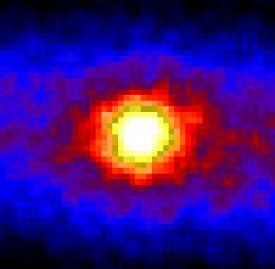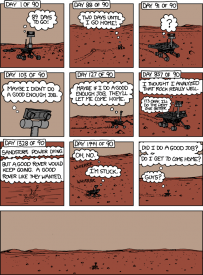Whoah! Very, very cool.
-
We LOVE books and hope you'll join us in sharing your favorites and experiences along with your love of reading with our community. Registering for our site is free and easy, just CLICK HERE!
Already a member and forgot your password? Click here.
You are using an out of date browser. It may not display this or other websites correctly.
You should upgrade or use an alternative browser.
You should upgrade or use an alternative browser.
Fascinating scientific stuff
- Thread starter beer good
- Start date
Aww. I'd take it home. :flowers:
Update of a sort on the double-slit experiment.
Tracking photons through the classic double-slit experiment
Tracking photons through the classic double-slit experiment
beer good
Well-Known Member
lenny nero
New Member
Those wacky Japanese will eat anything.
LOL
I was thinking the same thing, Gilgamesh.
I was thinking the same thing, Gilgamesh.
Cosimah2o
Active Member
Animal Magnetoreception (( BIRDS ))
http:// www.ks.uiuc.edu/Research/cryptochrome/
An interesting study ! There are some illustrations about the visual field of a bird through the magnetic filter function.
Magnetic sensing, perhaps because it is a type of sensory perception inaccessible to humans, has long captivated the human imagination. Over the past 50 years, scientific studies have shown that a wide variety of living organisms have the ability to perceive magnetic fields and can use information from the earth's magnetic field in orientation behavior.
The basis for the magnetic sense is located in the eye of the bird, and furthermore, it is light-dependent, ie, a bird can only sense the magnetic field if certain wavelengths of light are available. Specifically, many studies have shown that birds can only orient if blue light is present (although a recent study showed that they may orient in red light given sufficient accomodation time). The avian compass is also an inclination-only compass, meaning that it can sense changes in the inclination of magnetic field lines but is not sensitive to the polarity of the field lines.
The two main models for avian magnetoreception.
The former suggests that the compass has its foundation in small particles of magnetite located in the head of the bird.
The latter idea is that the avian compass may be produced in a chemical reaction in the eye of the bird, involving the production of a radical pair.
http:// www.ks.uiuc.edu/Research/cryptochrome/
An interesting study ! There are some illustrations about the visual field of a bird through the magnetic filter function.
yawn
Member
Interesting. I am really enjoying the Cryptochrome protein.Animal Magnetoreception (( BIRDS )) - a chemical reaction in the eye of the bird, involving the production of a radical pair.
The Voyager probes have entered a strange realm of frothy magnetic bubbles.
This seems as good a place as any to post this article.
Wired has just posted a really good article on Stuxnet.
I hope someone writes a book on this.
Wired has just posted a really good article on Stuxnet.
I hope someone writes a book on this.
beer good
Well-Known Member
BBC iPlayer - Happy Birthday, Neptune
On July 12th 2011, Neptune is one year old - one Neptunian year that is. The furthest planet from the sun it's only now completed one solar orbit since its discovery in 1846, travelling so slowly each Neptunian season lasts forty Earth years.
Too distant to spot with the naked eye the ancients could never have known of Neptune's existence. Nineteenth century astronomers had to climb on the shoulders of scientific giants to see it. First a tiny blue disc now an ice giant whose strange atmospheric features send shivers down the spines of astronomers today.
It's late spring, early summer in Neptune today. It's been that way for decades.
beer good
Well-Known Member
The Sun seen through the Earth in “neutrino light” :: Strange Paths

That's an image of the sun.
Photographed at night.
Right through the Earth.

That's an image of the sun.
Photographed at night.
Right through the Earth.

I had no idea neutrino detectors were that good. Even if the exposure was 503 days.
Impressive. Most impressive.
What's more awesome than neutron stars and red giants? Neutron stars inside red giants!
Computer gets better at Civilization by reading the manual.



